There is a unique and profound satisfaction that comes from planting a tree and watching it grow. But let’s be honest, patience can be in short supply when you’re dreaming of a garden bursting with color. The idea of waiting a decade or more for a newly planted sapling to put on a real show can feel disheartening. What if you could have the beauty of a mature flowering tree in a fraction of the time?
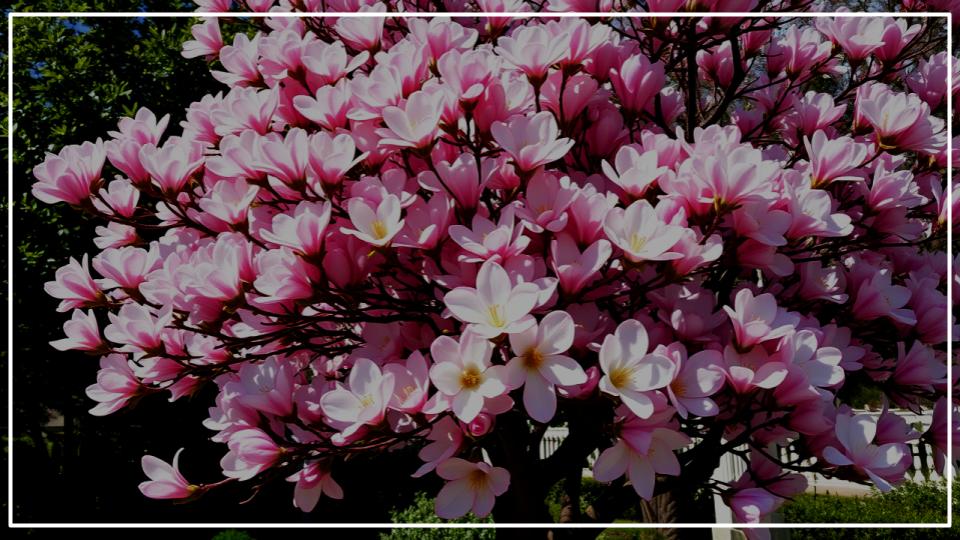
You can. The secret lies in choosing from a select group of fast-growing flowering trees that are programmed by nature to get up and grow. These vigorous varieties can add significant height and structure to your landscape within just a few years, quickly rewarding your efforts with a spectacular display of blossoms. This guide will walk you through nine of my absolute favorites, chosen for their beauty, reliability, and, of course, their impressive speed. Get ready to transform your garden from bare to beautiful.
Key Takeaways for Quick Color
Here’s what you need to know about choosing the right quick blooming trees:
- Match the Tree to the Place: Always check the USDA Hardiness Zone and the tree’s mature size before you buy. A fast-growing tree that gets too big for its spot is a future problem.
- “Fast” Means Vigorous: Faster growth can sometimes mean weaker wood. Plan for thoughtful pruning to build a strong structure, especially for trees like the Tulip Poplar.
- Sun Is Fuel for Flowers: Most flowering trees produce the best blooms in full sun (at least 6-8 hours of direct light per day).
- Mind Invasiveness: Some speedy growers, like the Empress Tree, can be invasive. I’ve noted these and suggest choosing sterile cultivars or native alternatives whenever possible.
Our Top 9 Fast-Growing Flowering Trees
A thoughtfully chosen tree is the backbone of any garden design. These nine selections are renowned for their vigor, establishing themselves quickly to provide shade, structure, and a breathtaking floral performance that you won’t have to wait years to enjoy.
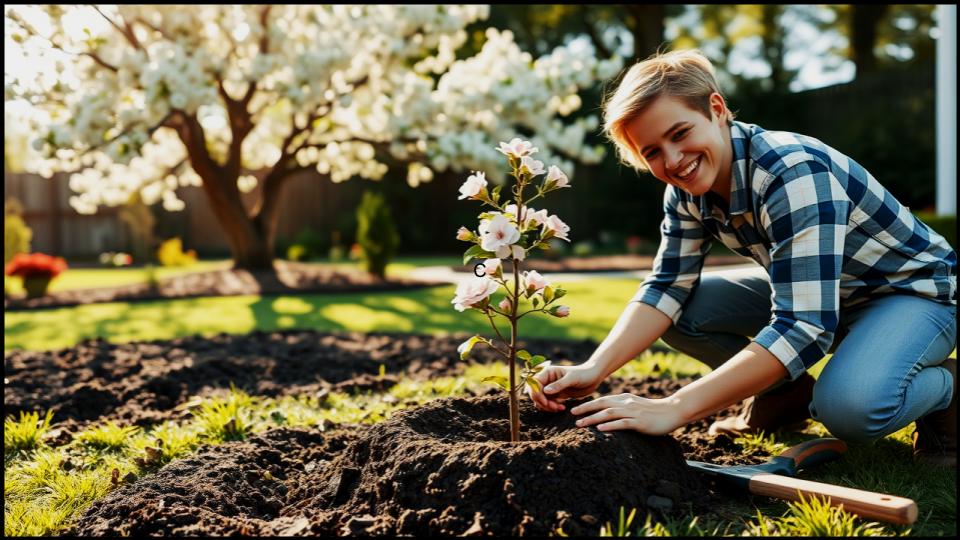
1. Tulip Poplar (Liriodendron tulipifera)
Why We Love It: This is a truly majestic native American tree. Its name comes from its beautiful, tulip-shaped flowers that appear in late spring—a lovely chartreuse-yellow with a splash of orange at the base. The leaves are just as distinctive, with a unique, squared-off shape that turns a brilliant gold in the fall.
- Growth Rate & Size: Very fast, easily growing more than 24 inches per year. It’s a large tree, reaching 70–90 feet tall, so it needs plenty of space.
- USDA Hardiness Zones: 4–9
- Growing Conditions: Prefers full sun and deep, moist, well-drained soil. In my experience, giving it ample water during its first couple of years is key to unlocking that rapid growth.
- Expert Tip: Because it grows so quickly, the wood can be a bit brittle. I make it a point to remove any poorly attached or crossing branches every other year to ensure it develops a strong, storm-proof structure.
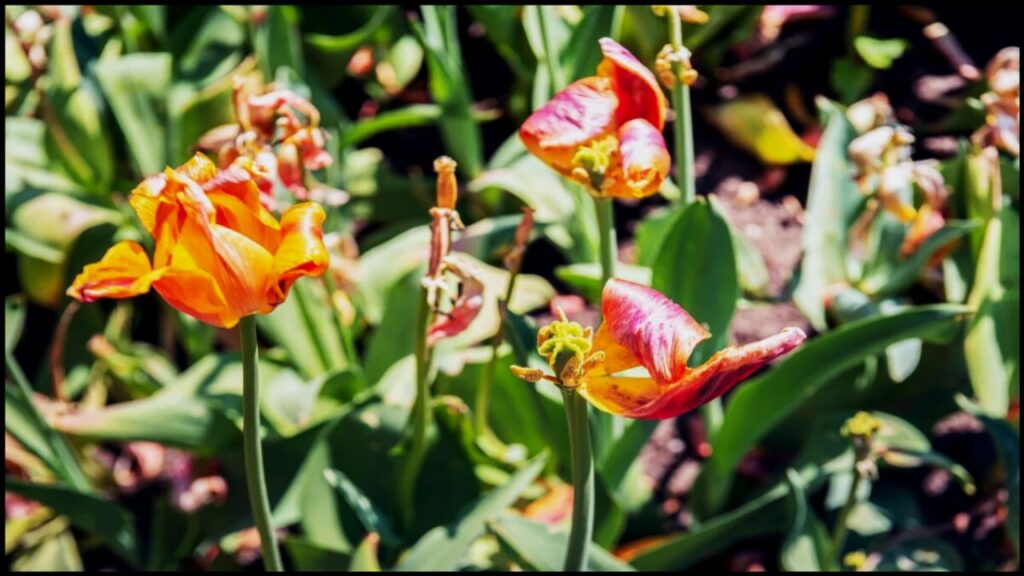
2. Saucer Magnolia (Magnolia × soulangiana)
Why We Love It: Few sights in the spring garden are as breathtaking as a Saucer Magnolia in full bloom. It produces enormous, goblet-shaped flowers in shades of pink, purple, and white on its bare branches before the leaves emerge. It’s pure elegance and a classic choice for flowering trees for home gardens.
- Growth Rate & Size: Moderate to fast, typically 12–24 inches per year. It grows into a beautiful rounded or spreading shape, usually 20–25 feet tall and wide.
- USDA Hardiness Zones: 4–9
- Growing Conditions: Thrives in full sun to part shade with moist, slightly acidic, well-drained soil. It appreciates a good layer of mulch to keep its roots cool.
- Expert Tip: Plant Saucer Magnolias in a spot protected from harsh winter winds and early spring frosts, which can damage the flower buds. A location with eastern exposure is often perfect.
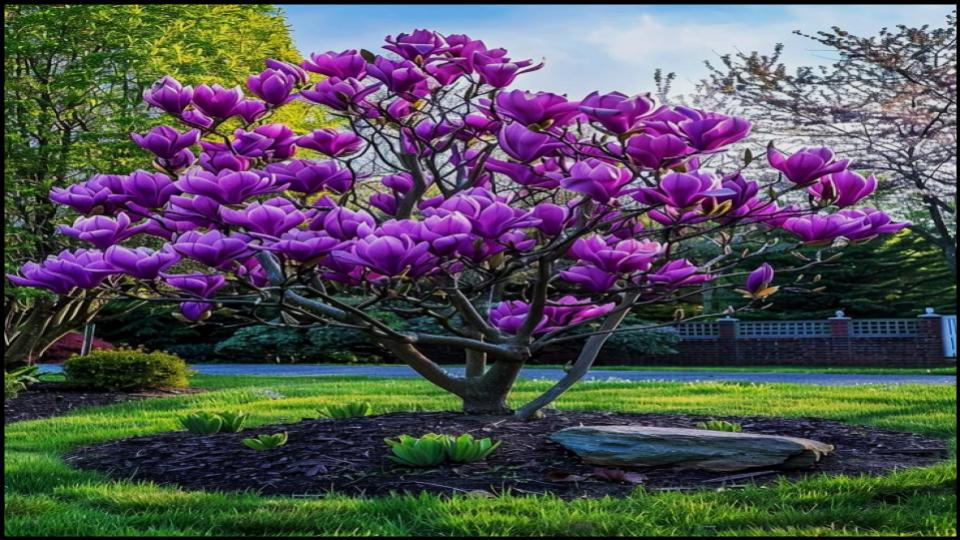
3. Eastern Redbud (Cercis canadensis)
Why We Love It: A harbinger of spring, the native Eastern Redbud lines its bare, dark branches with a profusion of tiny, vibrant magenta flowers. It’s a smaller, more adaptable tree that brings a delightful pop of color to woodland edges and smaller yards. The heart-shaped leaves that follow are also quite lovely.
- Growth Rate & Size: Moderate to fast, growing 13–24 inches annually. It typically matures to 20–30 feet tall with a similar spread.
- USDA Hardiness Zones: 4–9
- Growing Conditions: Extremely adaptable, it grows in full sun or part shade and is tolerant of a range of soil types, as long as they are well-drained. As noted by the experts at the Missouri Botanical Garden, it’s a wonderfully low-maintenance choice.
- Expert Tip: I love using Redbuds as understory trees near larger, established pines or oaks. The dappled light is perfect for them, and the contrast of their bright pink flowers against the dark bark of larger trees is simply stunning.
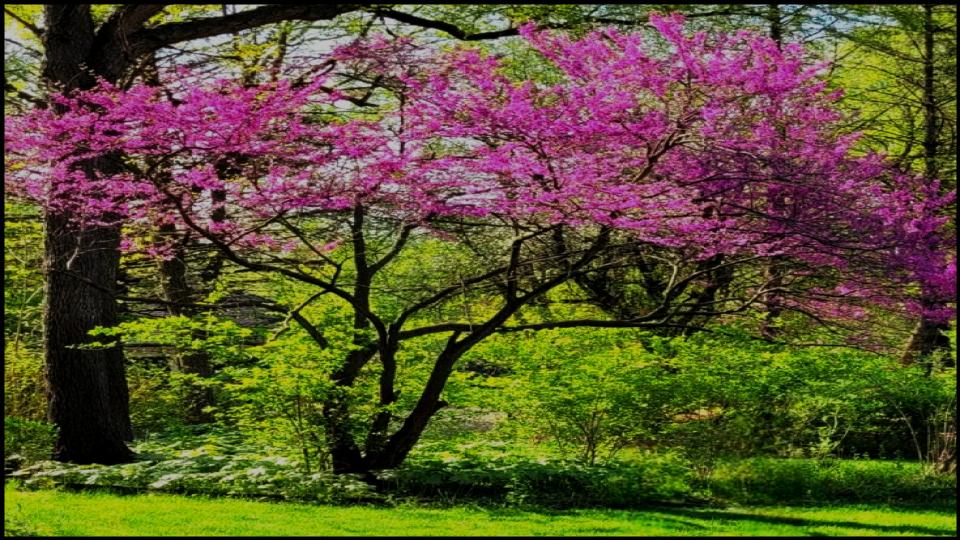
4. Crape Myrtle (Lagerstroemia indica)
Why We Love It: If you’re looking for a summer-long flower show, the Crape Myrtle is your tree. From early summer often until the first frost, it’s covered in large, crinkly panicles of flowers in shades of pink, red, lavender, or white. Many varieties also offer beautiful exfoliating bark and great fall color.
- Growth Rate & Size: Fast, with many varieties growing more than 24 inches a year. Sizes range dramatically from large shrubs to trees over 30 feet tall, so choose your cultivar carefully.
- USDA Hardiness Zones: 6–9
- Growing Conditions: Crape Myrtles demand full, direct sun to bloom well and stay healthy. They are very drought-tolerant once established and aren’t picky about soil.
- Expert Tip: A common mistake I see is what’s called “crape murder”—lopping off the tops of the trees in winter. This creates weak, spindly growth. Instead, simply prune out crossing branches and suckers, and deadhead spent flowers if you can reach them to encourage a second flush of these quick blooming trees.
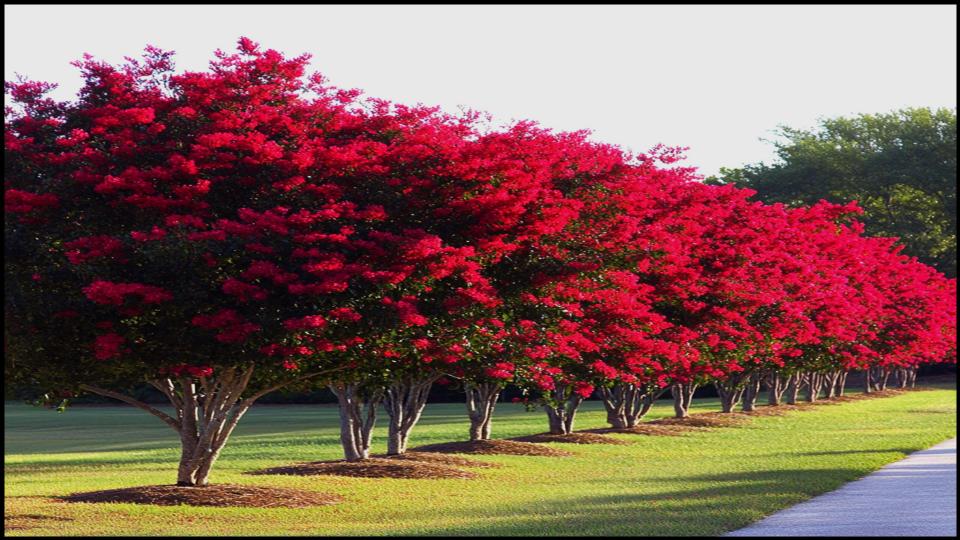
5. Okame Cherry (Prunus ‘Okame’)
Why We Love It: While many flowering cherries can be slow-growing and fussy, the ‘Okame’ is a vigorous and reliable exception. It’s one of the very first to bloom in spring, producing a cloud of delicate, carmine-rose flowers that are beloved by early-season pollinators.
- Growth Rate & Size: Fast for a cherry tree, growing 12–24 inches per year. It forms a lovely vase shape, reaching about 20–30 feet in height.
- USDA Hardiness Zones: 6–9
- Growing Conditions: For the best floral display, plant in full sun. It needs well-drained soil and consistent moisture. According to the NC State Extension, it has better disease resistance than many other flowering cherries.
- Expert Tip: Don’t plant ‘Okame’ too deep. I always tell gardeners to find the root flare—the point where the trunk widens to meet the roots—and ensure it’s sitting slightly above the soil level. This prevents a host of future health problems.
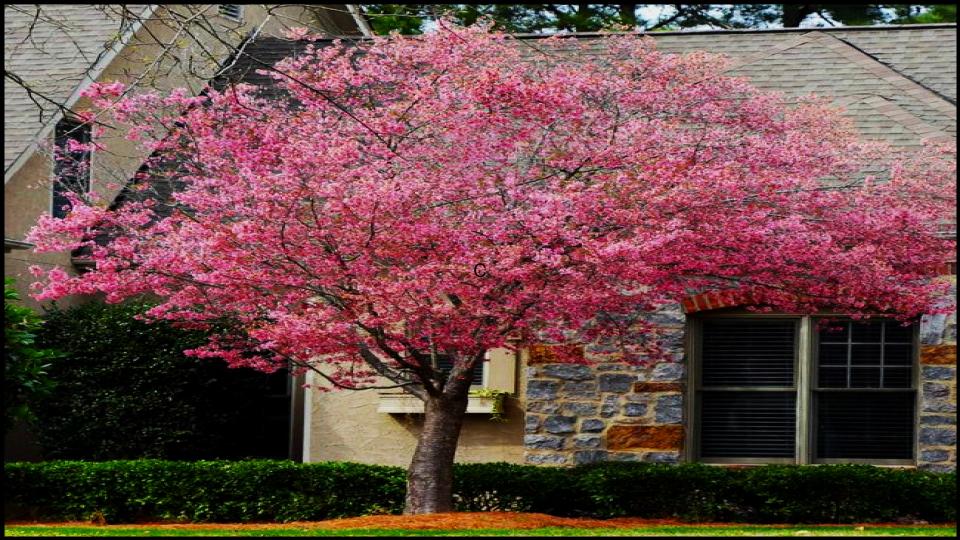
6. Golden Rain Tree (Koelreuteria paniculata)
Why We Love It: This is a tough, adaptable tree that provides fantastic multi-season interest. In mid-summer, it produces long, showy panicles of bright yellow flowers. These are followed by fascinating, papery, lantern-like seedpods that change from green to pinkish-brown and persist into the fall.
- Growth Rate & Size: Fast, growing 13–24 inches per year. It matures into a rounded tree about 30–40 feet tall and wide.
- USDA Hardiness Zones: 5–9
- Growing Conditions: It’s a workhorse! It thrives in full sun and is highly tolerant of drought, heat, and poor urban soils.
- Expert Tip: The Golden Rain Tree can self-seed and become weedy in some regions. Before planting, I recommend checking with your local cooperative extension to see if it’s considered problematic in your area. Deadheading the spent flowers can help prevent seed formation.
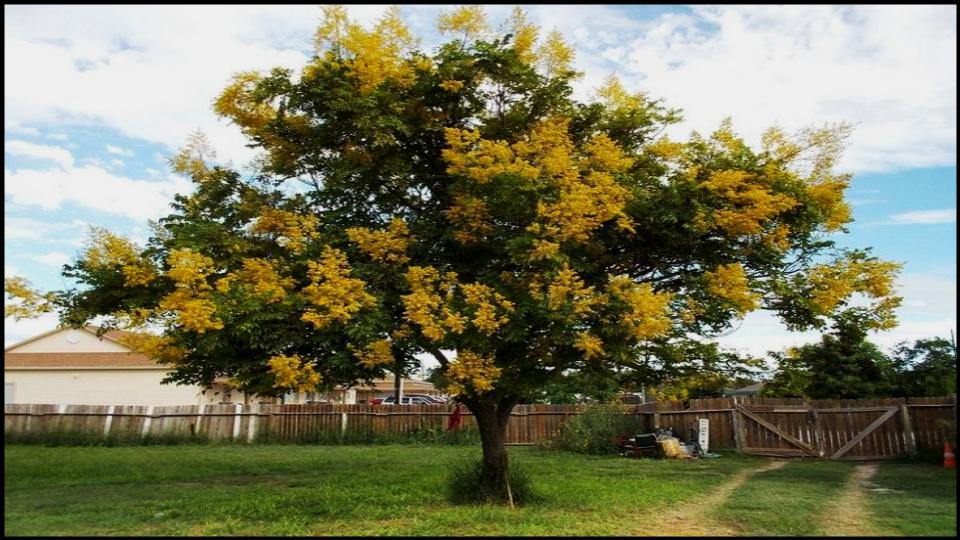
7. Southern Magnolia ‘D.D. Blanchard’ (Magnolia grandiflora ‘D.D. Blanchard’)
Why We Love It: While the species can be slow to start, this cultivar is known for its relatively vigorous growth. It embodies southern elegance with its massive, fragrant, creamy-white flowers that can be up to 8 inches across. The leaves are a showstopper, too—a deep, glossy green on top with a striking, velvety orange-brown underside.
- Growth Rate & Size: Moderate to fast, often 12–24 inches a year. It grows in a classic pyramidal shape to 50 feet or more.
- USDA Hardiness Zones: 7–9
- Growing Conditions: Full sun to part shade. It prefers rich, moist, slightly acidic soil but is fairly adaptable.
- Expert Tip: When planting this tree, remember its mature size. A common error is planting it too close to a house or driveway. Give it the space it deserves to become a true specimen tree that will be the envy of the neighborhood.
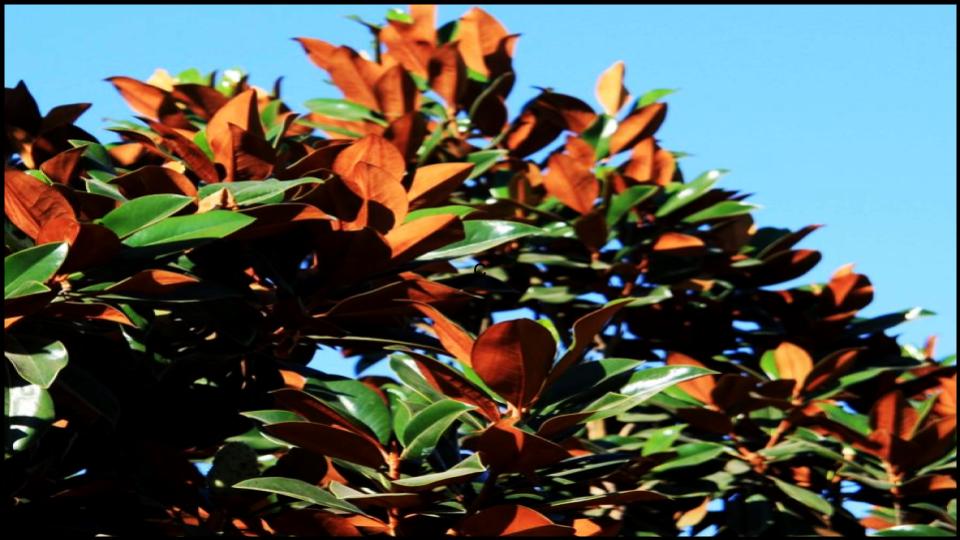
8. Cleveland Select Pear (Pyrus calleryana ‘Cleveland Select’)
Why We Love It: This tree offers an unforgettable, cloud-like display of pure white flowers in early spring. Its upright, symmetrical, teardrop shape makes it a fantastic choice for adding vertical interest to the landscape or for planting in rows along a drive.
- Growth Rate & Size: Very fast, easily growing 24–36 inches per year. It reaches 30–40 feet tall but stays relatively narrow at about 15 feet wide.
- USDA Hardiness Zones: 5–9
- Growing Conditions: Needs full sun and is remarkably tolerant of poor soils, drought, and urban pollution.
- Expert Tip: It’s crucial to address the controversy around Callery pears. While ‘Cleveland Select’ is prized for its shape, the species (Pyrus calleryana) is highly invasive. Many modern horticulturists, myself included, now steer gardeners toward native alternatives like Serviceberry (Amelanchier) or Fringetree (Chionanthus virginicus) which offer similar beauty without the ecological risk. If you must plant it, be a responsible steward and never let it spread.
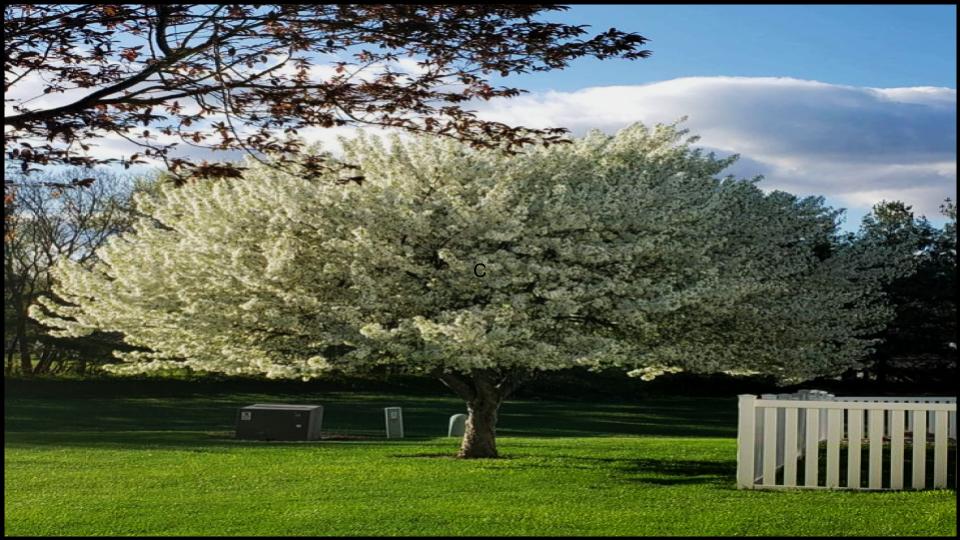
9. Royal Empress Tree (Paulownia tomentosa) – A Word of Caution
Why We Love It: You cannot have a conversation about fast-growing flowering trees without mentioning the Empress Tree. Its growth is legendary—up to 15 feet in its first year—and it produces large, fragrant, lilac-like purple flowers in the spring.
- Growth Rate & Size: Extremely fast. Can reach 30–50 feet tall in just a few years.
- USDA Hardiness Zones: 5–9
- Growing Conditions: Grows almost anywhere.
- Expert Warning: This tree is highly invasive in many parts of the United States. According to the Invasive Plant Atlas of the U.S., it aggressively displaces native plants. I cannot recommend planting the species tree. If you are captivated by its look, seek out sterile, non-invasive cultivars like Paulownia ‘Shang Tong’ to enjoy the beauty without the severe ecological damage.
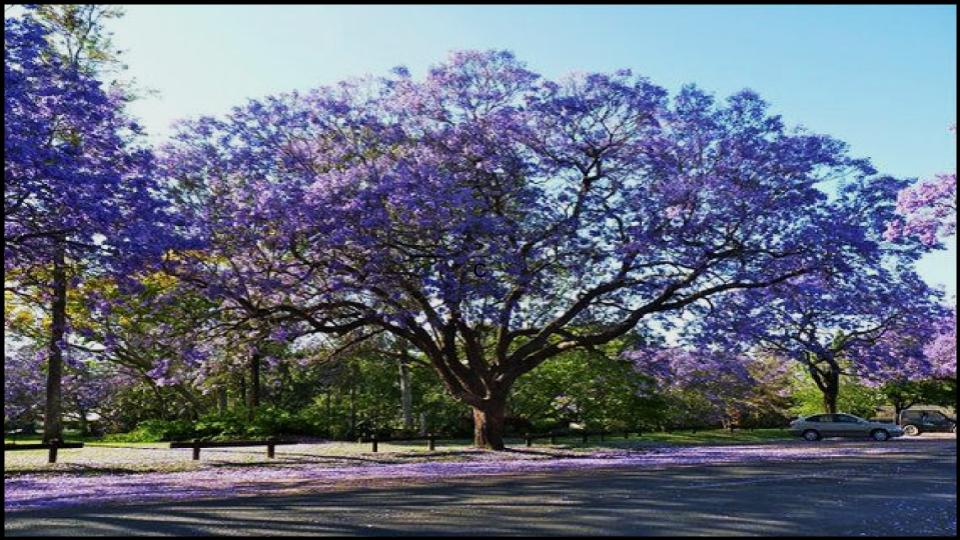
A Garden in the Making
Choosing one of these vigorous, fast-growing trees is like giving your garden a head start. The joy of seeing a small sapling transform into a substantial, blooming specimen in just a few seasons is one of gardening’s greatest rewards. By selecting the right tree for your space and giving it a little care as it gets established, you are not just planting a tree; you are quickly curating a future of shade, beauty, and spectacular color. Now, you’re ready to pick your favorite and get growing.
Read More
Keep Your Houseplants and Garden Alive While You Travel—No Tech Required
